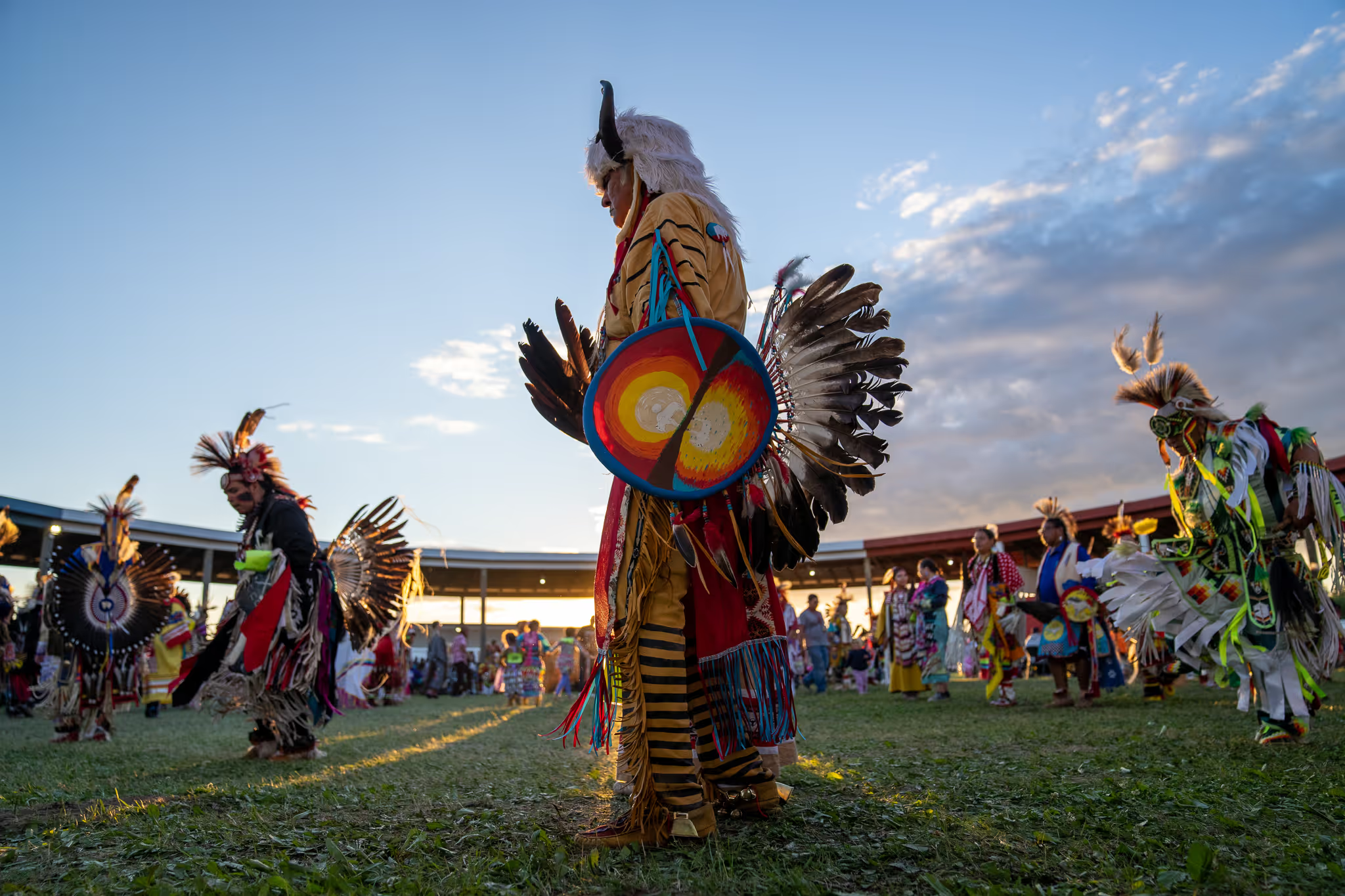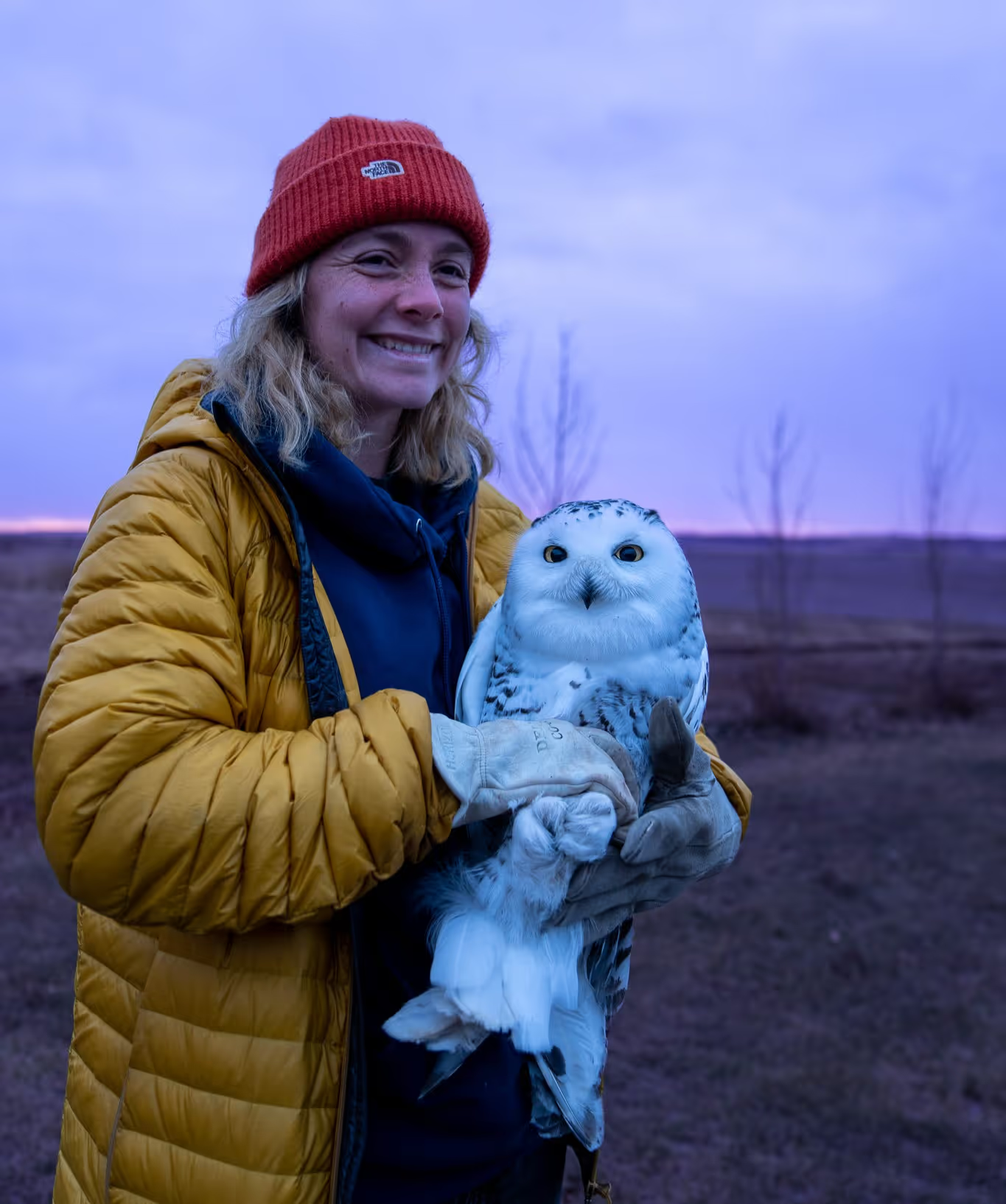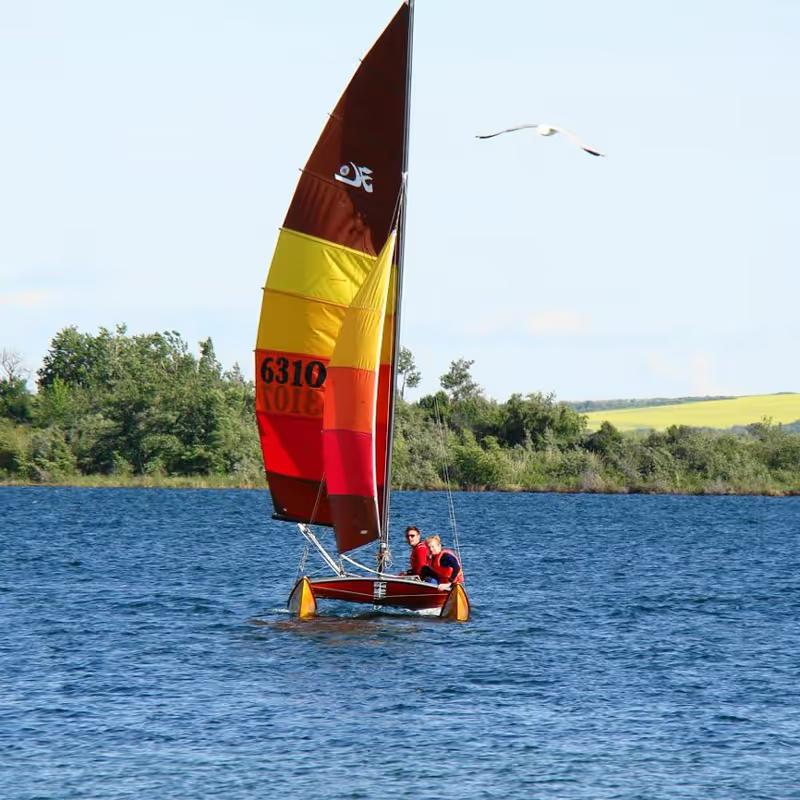The Redberry Lake Biosphere region is nestled in the Aspen Parkland- where the great plains meet the boreal forest. Dotted with seasonal ponds and marshes, along with aspen/shrub groves.

In The Redberry Lake Biosphere Region we share common values of equality, miyo-mahcihoyān (physical, emotional, mental and spiritual well-being ), appreciation of local nature, culture and heritage. Interconnectedness is what sustains our unique landscape, people and economy. We hope to inspire future generations to live harmoniously in an ecosystem that thrives in sustainable, environmental practices and community.
To nurture a balance between humans and nature where conservation, shared initiatives and sustainable resource use is encouraged and explored through research, education, and collaboration.
In the Redberry Lake Biosphere Region our mandate of conservation, sustainable development and capacity building is accomplished through collaboration and partnerships at the local, provincial, national and international levels. We partner with businesses, governments, and local organizations to achieve these goals throughout the region. The goals within each mandate below are a reflection of the region’s dedication to creating a sustainable, thriving environment for future generations.


To recognize that the concept of marginal land refers only to agricultural suitability and that non-agricultural lands are also valuable to society at large and are worthy of careful management.
To pilot and demonstrate sustainable development practices and share lessons learned with other regions in Canada
To have profitable farms, businesses and community initiatives.

To build democratic processes in decision-making for actions that affect the community and region.
Preserve the right to meaningful and direct participation in decision-making processes of our choice without influence from outside agencies.
To engage young people in selecting and creating opportunities for recreation, employment, education, and spiritual well-being.

To maintain a healthy environment with clean water, clean air and a thriving diversity of native species.
To continue to restore degraded soils and waters, as they are of ecological significance and needed for survival.

Support mitigation and adaptation to climate change and other aspects of global environmental change.
Conserve biodiversity, restore and enhance ecosystem services and foster sustainable use of natural resources.

To foster reconciliation between Indigenous and non-Indigenous Peoples through land-based programs and stewardship.

On January 21, 2000 The Man and the Biosphere Programme (MAB) designated the area of the Redberry Lake watershed as the Redberry Lake Biosphere Region. The RLBR is presently the only UNESCO designated biosphere region in the province. This designation was largely significant for a few reasons:
It was driven by the local community through the founding of The Redberry Pelican Project. This project garnered international attention for being recognized as an important site for the American White Pelican to nest and breed. Thereafter, it became a Migratory Bird Sanctuary, prompting further interest in becoming a designated site.
The area is not attached to a national or provincial park (like many other biosphere regions), so it is unique for its landscape.
The Redberry Lake Biosphere Region embodies cultural and historical influence. This stems from both the Indigenous peoples who first inhabited the area along with the European’s who settled the land in the 18th century. The start of it all however, began with the naming of the lake- Mihkomin sâkahikan (Redberry Lake).The saline lake got its name for the red berries that grow here: Silver and Canada Buffaloberry, Rosehips (Prairie, Prickly, Woods’) and Hawthorn. The berries, which also have medicinal properties, were used as a food source for Indigenous communities who travelled to the lake to use the area as a seasonal site for hunting bison. Though the sustenance that was provided is what initially brought people to return each year, the lake further became known for its spiritual and cultural significance. Cree Narratives have long since regarded Redberry Lake as a spiritual place. Many origin stories describe the lake being a place where people went to fast and where horses were seen emerging from the water (Mcleod, Neal. Cree Narrative Memory: From Treaties to Contemporary Times). Over the years these powerful narratives, along with the lake’s abundant food sources, eventually led to the area becoming named as a meeting place for both species and cultures alike. Since then, many communities and their cultures have migrated to the region. Learn more by clicking below!
Located on the edge of the Aspen Parkland in Saskatchewan, Canada, the RLBR sits in the central northwest corner of the province. It includes the entire Redberry Lake watershed and its borders which touch several municipalities and small communities. It encompasses Treaty 6 Territory, the traditional territories of the Cree Peoples- Mistawasis Nêhiyawak, Muskeg Lake Cree Nation, Lucky Man Cree Nation and the homelands of the Métis Nation– Western Region 2 and 2A. The town of Hafford is the gateway to the biosphere region.
Within its location lies a transitional ecosystem- the boreal forest to the north and grasslands to the south. A diverse range of species inhabit the area and rich, fertile, black soils are a part of the natural environment. The region used to be largely undisturbed and at one point in time, wild bison herds could be seen freely roaming the land. These wild herds, in conjunction with the landscape’s natural, fertile features have largely contributed to the abundance of diverse history in the RLBR today.

Our work is guided by a Board of Directors made up of twelve volunteer members who bring the voice of our community to the table. Representing our local Rural Municipalities, the Town of Hafford, Education and Culture sectors, and members at large, they offer a rich blend of experience and perspective. Together they help shape our vision, guide important decisions, and provide sound financial stewardship which ensures our organization continues to grow in a way that reflects the needs and values of the people we serve. Their commitment and varied perspectives help ensure that our work remains community-driven, transparent, and impactful.
UNESCO biosphere region’s are places where people share a way of living with nature that builds a future we’re proud of. We model solutions for a sustainable future, celebrate cultural and biological diversity, and empower people to engage with one another and with nature in healthy ways. Biosphere region’s foster and share scientific, Indigenous, and local knowledge in order to explore new ways of living that solve global challenges and address the United Nation’s 2030 Agenda for Sustainable Development.
Designation occurs under UNESCO’s Man and the Biosphere (MAB) Programme. Find out more here.
There are currently 18 regions in Canada and 701 regions in 124 countries internationally. The Canadian regions are organized together for mutual support through the Canadian Biosphere Region Association (CBRA).
Biosphere regions address one of the most challenging issues we face today: How do we maintain the health of natural systems while meeting the needs of communities? Biosphere regions act as “living laboratories” for testing this dialogue and demonstrate integrated management of land, water and biodiversity to work towards a sustainable future for all.
Everyone. Biosphere regions are organized in a worldwide network. The activities in conservation, development and education contribute to practical ways to resolve land-use conflicts and to ensure protection of biological diversity while facilitating sustainable economic development locally. They also help create a consciousness of solidarity among all people of the world to sustainably manage the biosphere.
Local communities– people benefit from the protection of species, land and water resources within their biosphere region. They have a continued opportunity to maintain existing traditions and lifestyles as well as a more stable and diverse local economy with additional employment. Workshops and other educational events organized by their biosphere region provide people knowledge on how to make their own local community a sustainable place.
Scientists– Biosphere regions encourage research on ecological processes or biological diversity. Offering a growing database on which to build new hypotheses and experiments, the regions provide a space for monitoring activities on a long-term basis.
Government Decision Makers and Agencies– The Biosphere provides better information on resources found in the biosphere environment. This enhances their ability and knowledge base to manage natural resources in a sustainable way.
Visitors- Biosphere regions offer a unique opportunity for visitors in the area to experience recreation from a holistic environmental approach. Not only will they gain education on how sustainable communities prosper in well-being and economically, but will further build skills that can be implemented in their own communities, encouraging the network to grow.
In Canada, there is currently no program of core funding for Biosphere Regions. Instead, in-kind support is sought out through grants, bursaries, contribution agreement and (private) donations.
The common (shared) reality is that all these areas have a protected zone for the conservation of ecosystems. Within biosphere regions the zone is called the “core area”. However, the difference from other protected areas is that biosphere regions also emphasize the importance of community-based efforts to enable a stable and sustainable economy.


